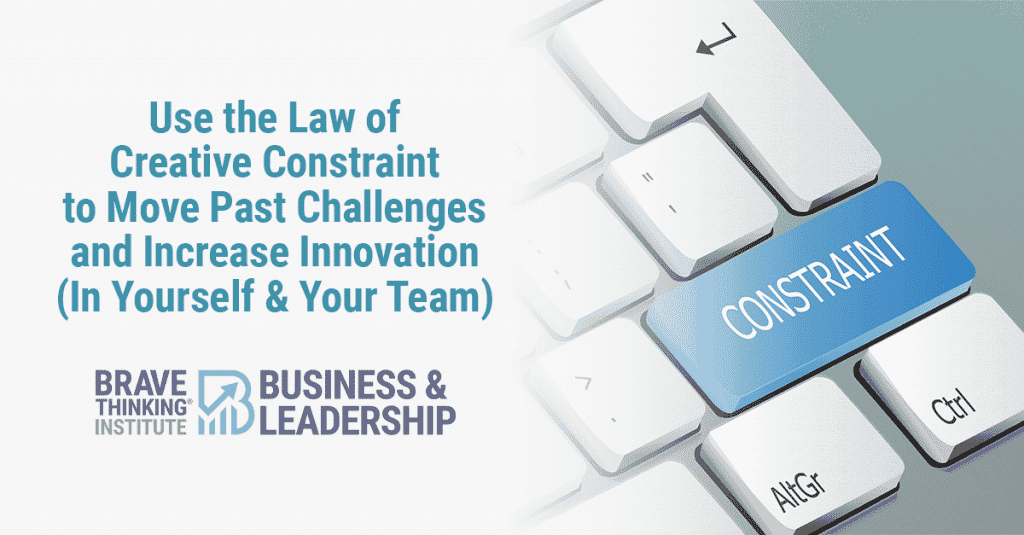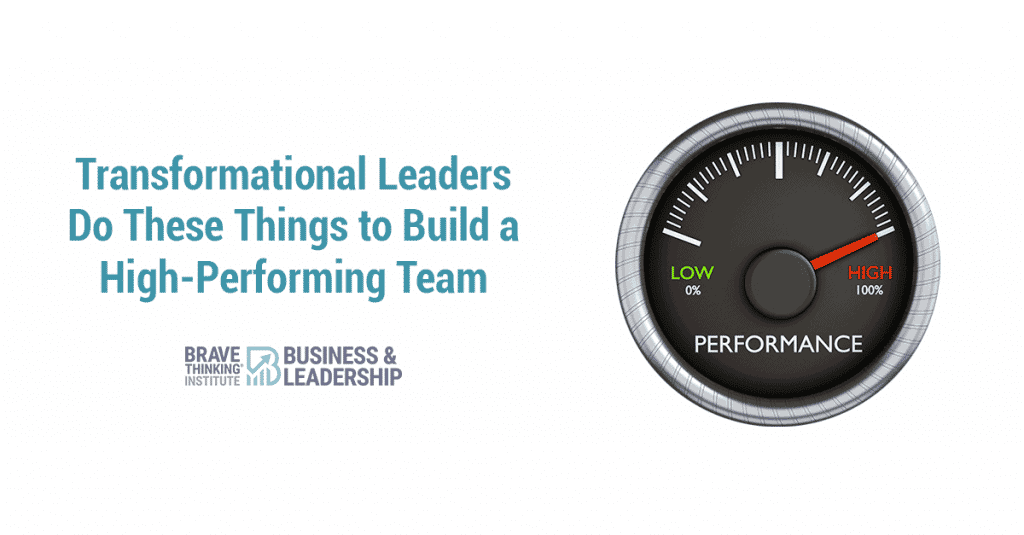Discover the 3 Types of Constraints Standing Between You and Your Goals – and 3 Mindsets You Can Use to Tackle Obstacles
Encountering a challenge that stops you from achieving a goal is frustrating. But dealing with roadblocks and obstacles is a normal part of doing business.
What determines your success is your mindset – and how you choose to deal with the constraint you’re facing.
In this article, we’ll continue our exploration of the 7 Hidden Laws of Leadership.

Now that you’ve learned about the Law of Essential Self, the Law of Distorted Reality, and the Law of Vibrational Fit, we will discuss the Law of Creative Constraint.
The Law of Creative Constraint states that an “obstacle” is really an opportunity, disguised as limitation.
Constraint Is a Universal Experience
Have you ever experienced a challenge or problem that first appeared to be a limitation, but then circumstances changed and you realized it was truly a blessing?
If you’re like most people, the answer is yes! In fact, you may have experienced this phenomenon as recently as within the past year.
Many business owners and leaders first saw the last few months as an almost-insurmountable obstacle. But rather than giving up, they chose to get creative and found ways to not only survive these unprecedented times, but to innovate, thrive and grow.
It’s normal in life for things to not always go exactly as we would love. The real question is, what do you do in that moment when you hit a barrier or encounter a problem or an obstacle? How do you choose to respond?

Exceptional leaders respond very differently to challenges than the average person. I particularly enjoy the framework that Adam Morgan and Mark Barden teach in their book, A Beautiful Constraint.
Three Types of Constraint
A constraint is anything that prevents you from achieving your goals. Constraints tend to fall into three categories:
- Foundational constraints are universal challenges that everyone faces.
- Resource constraints, which means not having enough resources (e.g., people, money, etc.) to accomplish your goal.
- Method constraints, which is what happens when the strategy you choose is not the best one to achieve the goal you’re pursuing.
You may be dealing with one major constraint. Or you might be dealing with all three. Regardless, how you respond to your constraints will impact your results.
Constraints Inspire Innovation
Plenty of people let constraints stop their progress and limit their success. But you can turn constraints into an opportunity to get creative and find innovative ways to achieve your goals.
The Law of Creative Constraint In Action
Let’s look at two real-world examples to see the type of innovation that can spring from constraints.
Zappos
The first example is the shoe retailer Zappos. Tony Hsieh envisioned a company that sold shoes online. Yet they faced a major foundational constraint: People don’t buy shoes without trying them on.
Hsieh could have scrapped his dream in the face of this major constraint. Instead, he asked, “How can we create the largest shoe retailer in the world in an environment where people can’t even try on the product?”
The answer? Exceptional customer service. Zappos used the constraint of the situation where people can’t try on the product to create an exceptional level of customer service that we enjoy today, not just when buying from Zappos, but from many online retailers. The constraint inspired Zappos to innovate the concept of free returns — an idea that has become the benchmark for many other retailers, such as Amazon.
Zappos upped their customer service in other ways, as well. In addition to unconditional free returns on their shoes, you can talk to customer service on the phone 24/7, for example. The exceptional customer service Zappos provides made a massive difference in their image and their client satisfaction. And it absolutely helped them become the largest online retailer of shoes in the world.
Zappos took what looked at first like a problem so big it could have ended their business before it started — and flipped it into an opportunity to create a competitive edge. That’s the potential power of creative constraint.
Southwest Airlines
Southwest Airlines is another great example. When this company was brand new, they had three airplanes, and the owner managed to close a deal for four air routes. But how do you serve four air routes with only three airplanes?
Southwest Airlines used the Law of Creative Constraint to innovate until they discovered a solution. They figured out that they could serve all four routes with only three planes if they could get the turnaround time between flights down to 10 minutes.
Once they knew the goal they had to achieve, they developed a new way to get people on and off the plane. Rather than reserving specific seats, as is the norm for other airlines, Southwest passengers board in three groups, and seating is first-come, first-served.
It’s a faster way to fill the plane, and the airline’s customers are so well-trained that they begin lining up as soon as they see the previous flight’s passengers start to disembark.
Southwest now is known for their competitive prices, as well as exceptional customer service. They’re one of the highest-rated airlines on our planet — all because they took a problem and turned it into an opportunity.
Your Mindset Determines Your Leadership Success
Your ability to turn problems into opportunities depends on your mindset. There are three mindsets we can use, and we tend to bounce around among all three.
As a leader, you want to understand what these mindsets are, so you can deliberately choose the right mindset for a particular situation.
Mindset #1: Victim Mindset
Not surprisingly, people in this mindset view themselves as the victims of circumstances.
They interpret obstacles by saying:
“This problem is too big.”
“I better give up or lower my goal.”
“Maybe I’m expecting too much.”
Many people fall into this mindset as a default, and most don’t realize that they have the power to choose differently.
Mindset #2: Neutralizer Mindset
People in the neutralizer mindset want to neutralize the problems they encounter. They are clear-eyed in acknowledging problems, and they are committed to finding a way to put through it or go around it. They will achieve their goals – no matter what.
Mindset #3: Transformer Mindset
The transformer or transformational mindset is a high-level mindset where you transform a problem into an opportunity.
When you’re in this mindset, you’re able to ask,
“How might this challenge or problem actually provide an opportunity for me to improve my goal?”
“Is there a chance this might just be a blessing in disguise … where what I gain is something that I’ll look back on in the future and say: ‘Wow, that challenged me to change what I’m doing in a way to really increase or up my results?’”
Look to the examples of Zappos and Southwest Airlines to see what a gift this mindset can be.
Which of these mindsets do you tend to fall into most naturally? Share your thoughts below! I tend to spend a fair amount of time in this neutralizer mindset.
When I face a problem, I’ll tackle it and achieve my goal through will and force. But now that I’m aware that the transformer mindset exists, I can stop and choose to deliberately put myself in that even more empowering state.
Harness the Law of Creative Constraint
Challenges are a normal part of business — and life. But rather than accepting them or trying to force our way through them, we can use the constraints we face as a springboard to greater innovation and success.
The next time you face a limitation, pause to ask yourself,
“Am I in a victim mindset, a neutralizer mindset, or a transformer mindset?”
The transformer mindset is the state of greater creativity and empowerment. Choose it whenever possible to transform the way you view challenges – and the way you respond.
It’s your turn – share with us: How do you apply the Law of Creative Constraint in your life or your organization?




Wonderful to remember and reflect upon in moments of a challenges and how we choose to think and then act.
Absolutely, Joan! There’s great self-discovery in that practice that we can use when we face new challenges. Thank you for your perspective. Have a transformational day!
Very well stated. This is something I’ve been teaching people for a long time. Sometimes, people just don’t realize that your mindset, as you approach a problem, makes all the difference in how it gets resolved and whether or not it gets turned into a blessing.
I love that you are teaching this to others, Linda. Great job being a transformational leader. We like to say, “it’s not the problem that is the problem, it’s your thinking about the problem is the problem.” Have a transformational day!
Absolutely brilliant Thank you John.
You are welcome, Sylvia. I am grateful that you took the time to read and comment today. Have a transformational day!
Excellent!
Thank you, Oscar. I’m so happy this leadership law resonated with you.